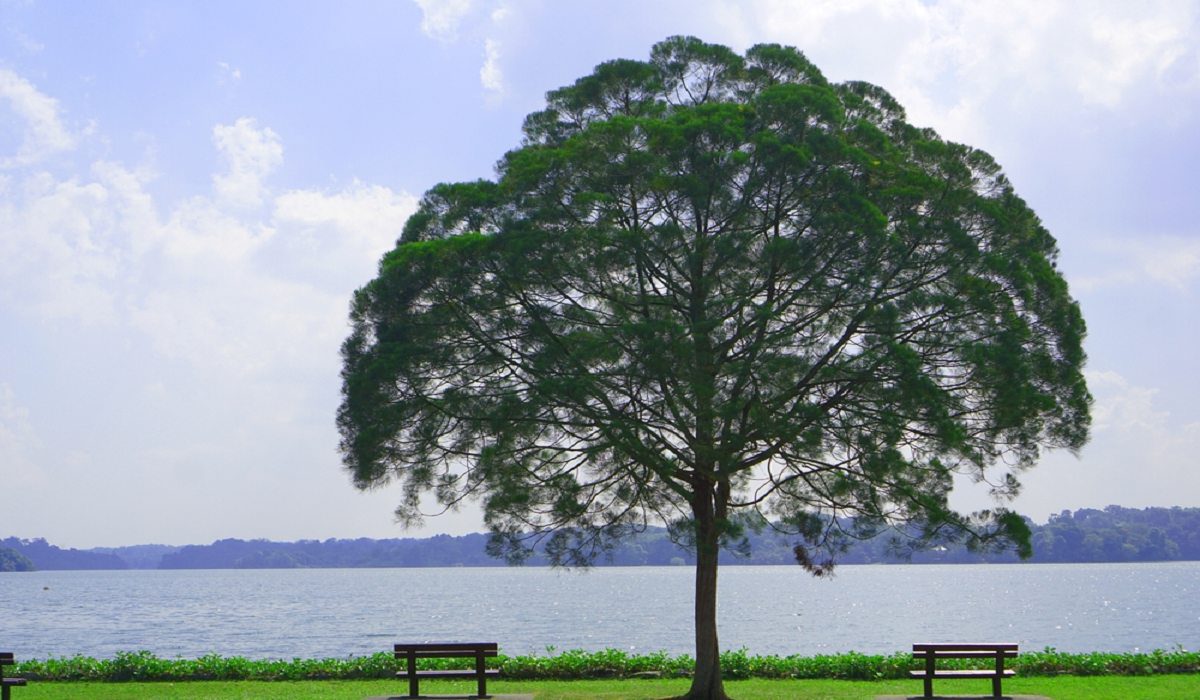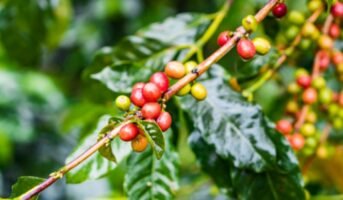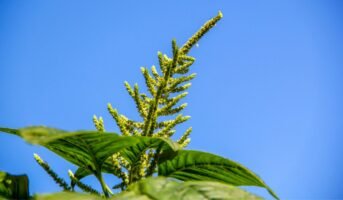Casuarina trees, also known as ironwood, are evergreen trees that are native to Australia, the Indian subcontinent and Indonesia. They are known for their distinctive, needle-like leaves. They grow up to 100 feet tall. The genus Casuarina comprises 17 different kinds of trees. It was formerly thought of as the family’s lone genus but has subsequently been divided into four genera.
They are evergreen trees and shrubs that may reach heights of 35 m (115 ft) and have thin, green to grey-green twigs with 5–20 whorls of tiny scale leaves. A small number of species are monoecious. The fruit is a woody, oval structure with little wings that superficially resembles a pine cone. It is made up of multiple carpels.
Although the tree is referred to as ‘ru’ in Modern Malay, the generic name is derived from the Malay term for the cassowary, kasuari, and alludes to the similarity between the bird’s plumage and the plant’s leaf.
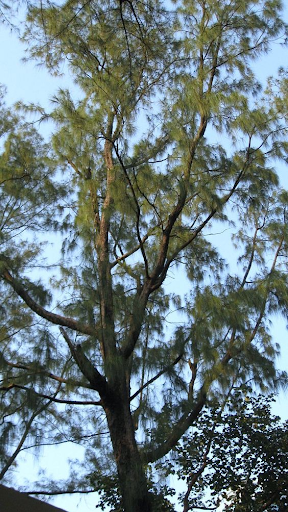
Source: Pinterest
Casuarina tree: Quick facts
| Family Name | Casuarinaceae |
| Species | Casuarina defungens, Casuarina hexagona |
| Height | Up to 100 feet |
| Botanical name | Casuarina |
| Native area | Australia, Indian Subcontinent and Southeast Asia |
| Width | 1.5 m |
| Environmental Impact | Positive |
| Maintenance | Low |
| Climatic zone | Cool to mild tropical |
Also read: How to grow and care for Maple trees?
Casuarina trees: Different types and physical description
- Casuarina equisetifolia: This is the most widely cultivated species of casuarina and is native to tropical and subtropical regions of Australia, Indonesia, and other parts of Southeast Asia. It is a fast-growing tree that can reach heights of up to 100 foot.
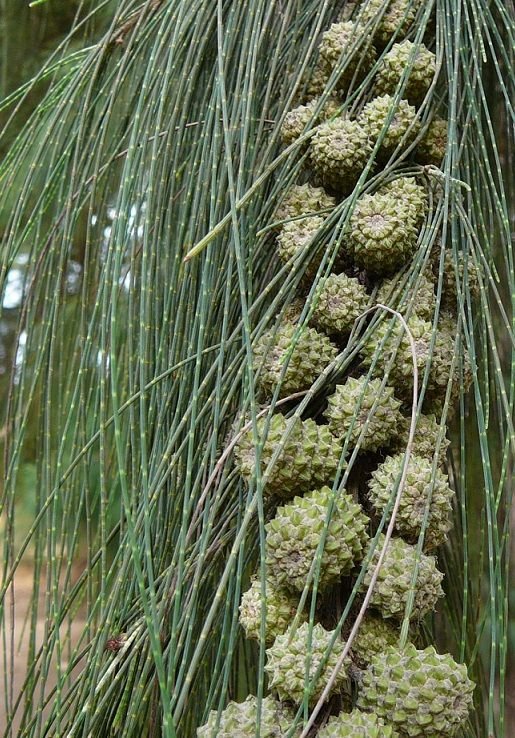
Source: Pinterest (Dida Selim)
- Casuarina glauca: This species is native to Australia and is known for its distinctive, blue-green foliage. It grows to a moderate size, reaching heights of around 50 foot.
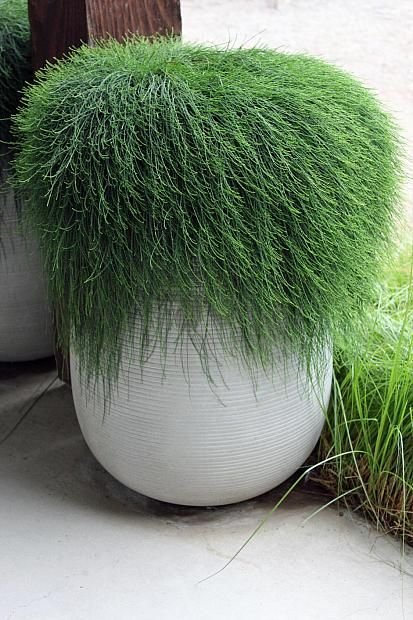
Source: Pinterest (nativeson.com)
- Casuarina cunninghamiana: This species is also native to Australia and is known for its tall, slender growth habit and dark green foliage. It can grow up to 100 foot.
.

Source: Pinterest (arboles-con-alma.blogspot.com.ar)
- Casuarina stricta: This species is native to Australia too and is known for its compact, upright growth habit and dark green foliage. It grows to a moderate size, reaching heights of around 50 foot.
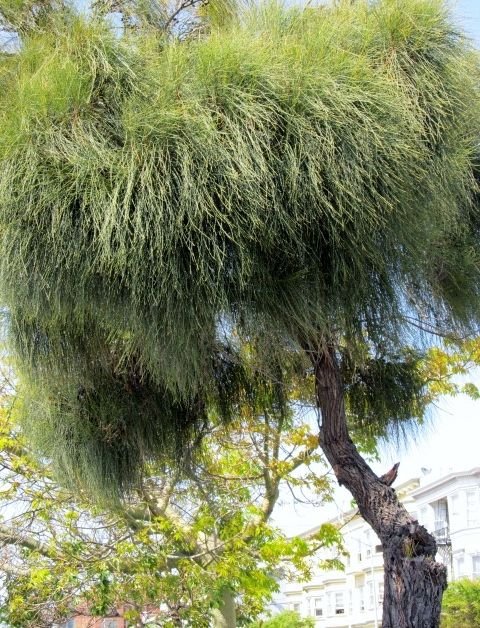
Source: Pinterest (Dawn Weasler)
Overall, casuarina trees are known for their attractive, evergreen foliage and are widely used in landscaping and other applications.
Casuarina tree: How to grow it?
Here’s how to grow Casuarina trees in both gardens and pots.
Growing Casuarina trees in a garden
- Pick a spot in the garden that receives direct sunlight. Incorporate a soil improver and a plant fertiliser to make sure that the planting area is well-prepared.
- Create a planting hole that is twice as big and as deep as the root ball. To gently tease the roots, take the plant out of the container.
- Insert into the hole and gradually firm the earth down. The outside margin of the plant’s root zone should be surrounded by a raised or doughnut-shaped ring of dirt. This helps keep the water where it is required. After planting, always give the area a good watering to compact the soil around the roots and maintain moisture for a few weeks as the new plant grows.
- Maintaining it away from the trunk, mulch the base with organic material.
- To encourage healthy root growth, fertilise in the fall and spring with the soil improver and the plant fertiliser used previously.

Source: Pinterest
Growing Casuarina trees in a pot
- Pick a pot that is at least twice as big as the plant you want to use. Choose a spot in the garden that gets direct sunlight.
- Add high-quality potting soil to the pot.
- Take the plant out of its container and gently tease its roots.
- Insert into the hole and carefully firm up the potting mix.
- Keep organic mulch away from the trunk and mulch the base of the tree.
- To encourage healthy root growth, fertilise in the spring and autumn using a soil improver and a plant fertiliser.
Casuarina tree: How to care for it?
Here are some tips on maintaining a casuarina tree:
- Planting: Choose a location with well-draining soil and full sun exposure. Casuarina trees prefer a slightly acidic soil pH.
- Watering: Casuarina trees are drought-tolerant and do not require frequent watering once established. They do need a good amount of water in the first year after planting to help them get established. Water the tree once a week or more frequently if the soil is dry.
- Fertilising: Casuarina trees do not require a lot of fertilisation. If you do choose to fertilise, use a balanced fertiliser with equal amounts of nitrogen, phosphorus, and potassium (NPK).
- Pruning: Casuarina trees do not require pruning but if you do need to prune, do so in the late winter or early spring. Use sharp and clean pruning shears to remove any dead, damaged, or diseased branches.
- Pest control: Casuarina trees are resistant to pests and diseases but they can be prone to infestations of mites, aphids, and scale insects. If you notice any of these pests on your tree, use an appropriate insecticide to control them.
By following these care tips, your casuarina tree should thrive and provide you with beautiful, evergreen foliage for years to come.
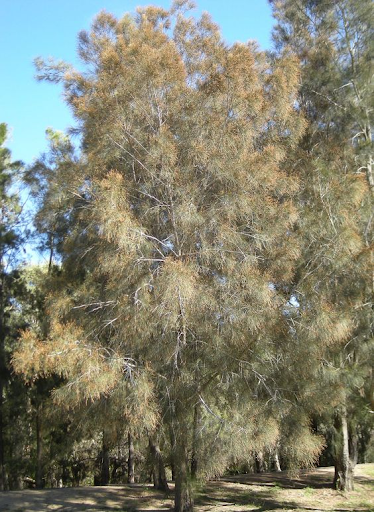
Source: Pinterest
Casuarina tree: Uses
Casuarina trees have a number of uses. These include:
- Landscaping: Casuarina trees are often used as ornamental trees in landscaping due to their attractive, evergreen foliage and ability to grow in a variety of soil types.
- Timber: The wood of casuarina trees is dense and strong, making it suitable for use in construction, making furniture, and other wood products.
- Erosion control: Casuarina trees have a fibrous root system that helps to stabilise soil and prevent erosion. They are often used in coastal areas to protect against beach erosion.
- Shade: Casuarina trees provide shade and can be used to create a natural canopy for outdoor spaces.
- Wildlife habitat: Casuarina trees provide habitat and food for a variety of wildlife, including birds and small animals.
- Windbreaks: Casuarina trees can be planted in rows to create windbreaks, which can help to protect crops and other plants from strong winds.
Overall, casuarina trees are versatile and have a variety of uses in many areas. The bark is useful for producing packaging material and the bark for tanning, colouring and medicinal substances.
Casuarina tree: Timber production
Timber is required for various purposes, including construction. The Casuarina tree is one of the timber-producing trees. It is a straight-growing tree, which makes it suitable for producing timber. Hence, it can be cut to long lengths. Moreover, the tree is strong and fibrous. The wood of the tree is used commercially for making furniture, shingles or fencing and for firewood. It is also used in scaffoldings and temporary structures, among other applications.
Casuarina tree: Erosion control
The Casuarina tree has nitrogen-fixing properties and enhances soil fertility. This plays a crucial role in establishing the plantation in adverse sites. Moreover, it can thrive in extreme climatic conditions. According to studies, the plantation of this tree along the river and coastal regions can help in checking wind velocity and reducing damage during natural calamities while boosting environmentally degraded soils along with soil fertility and stability.
Casuarina tree: Shade for crops
The Casuarina tree is delicate, with slender terminal branches. Intercropping the tree with groundnut, watermelon or pulse crops during the first year, much before the tree crown begins closing in and create a shade effect on agricultural crops. Moreover, it helps keep the field weed-free.
Casuarina tree: Windbreaks for livestock
The straight cylindrical stems of the tree are commonly used in houses across rural areas. These are also used as scaffolds at construction sites. It is the main species for developing shelterbelts in coastal regions and windbreaks to protect crops. Cultivation of this tree helps in reclaiming mined areas and afforesting nutrient-poor sites.
Casuarina tree: Habitat for wildlife
Casuarina trees have been considered a threat to wildlife. They can displace native beach vegetation, which serves as a natural habitat for wildlife. In Florida’s Everglades, the tree is a threat to endangered species such as the American crocodile, loggerhead turtle and green turtle.
Casuarina tree: Ornamental landscaping
Due to its attractive foliage, the Casuarina tree is widely used for landscaping purposes. It can be used to create a solid hedge and grown in gardens. In many regions, the tree is grown on the roadside for decorative purposes.
Casuarina tree: Toxicity
Casuarina trees are not toxic to humans or animals. However, the wood of casuarina trees contains a substance called tannin, which can cause allergic reactions in some people. If you are sensitive to tannin, you may want to avoid handling the wood of casuarina trees or wear gloves when working with it.
FAQs
What are casuarina trees used for?
Casuarina trees are known for their distinctive, needle-like leaves and can grow up to 100 feet tall. Casuarina trees have a number of uses, including landscaping, timber, erosion control, shade, wildlife habitat and windbreaks.
Can casuarina trees be pruned?
Casuarina trees do not require pruning, but if you do need to prune, do so in the late winter or early spring. Use sharp, clean pruning shears to remove any dead, damaged, or diseased branches. Avoid over-pruning, as this can stress the tree and lead to reduced growth.
What is the botanical name of Casuarina?
Casuarina equisetifolia is the botanical name of Casurina.
What is the benefit of casuarina leaves?
Casuarina leaves are used for the treatment of nervous disorders, acne, throat infections, stomach ulcer, constipation, cough, diabetes, diarrhoea, dysentery etc. However, before consuming them, check with your medical officer.
Which fertiliser is recommended for Casuarina tree?
NPK fertiliser is recommended for Casuarina tree.
What are the benefits of growing the Casuarina tree?
Casuarina tree helps in keeping the soil fertile by nitrogen fixation.

With 16+ years of experience in various sectors, of which more than ten years in real estate, Anuradha Ramamirtham excels in tracking property trends and simplifying housing-related topics such as Rera, housing lottery, etc. Her diverse background includes roles at Times Property, Tech Target India, Indiantelevision.com and ITNation. Anuradha holds a PG Diploma degree in Journalism from KC College and has done BSc (IT) from SIES. In her leisure time, she enjoys singing and travelling.
Email: [email protected]
